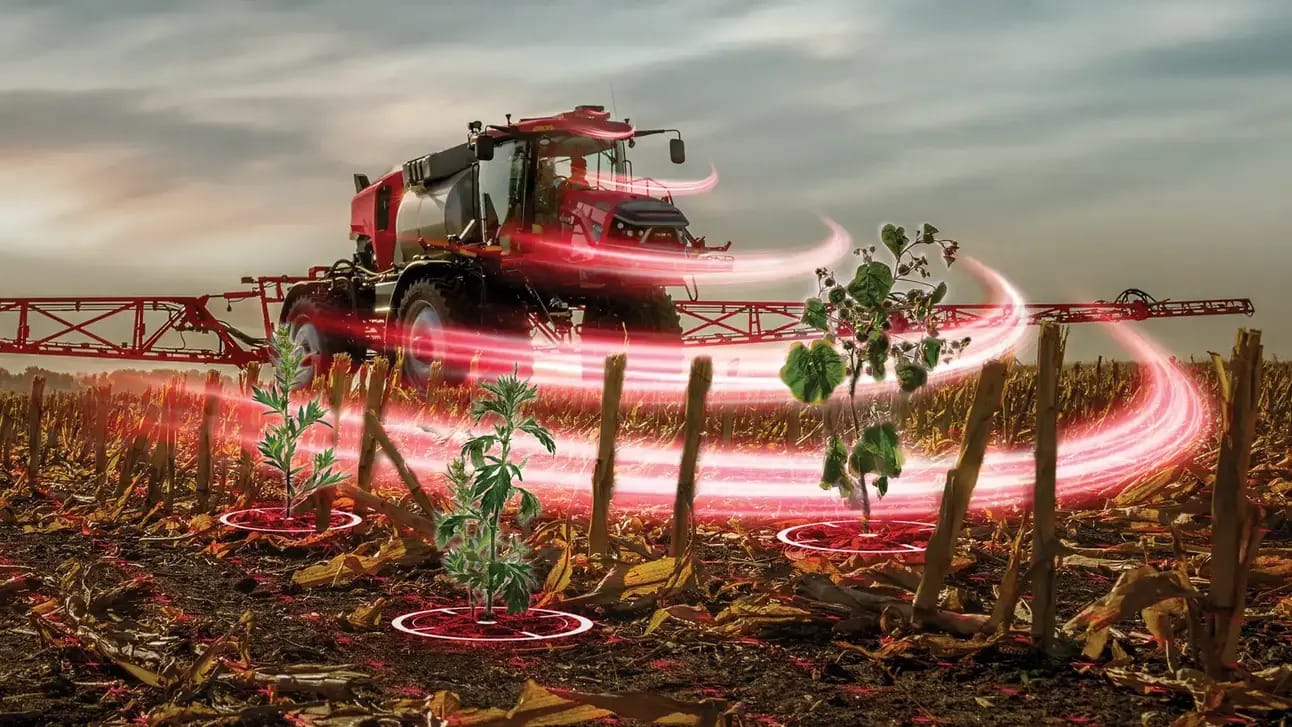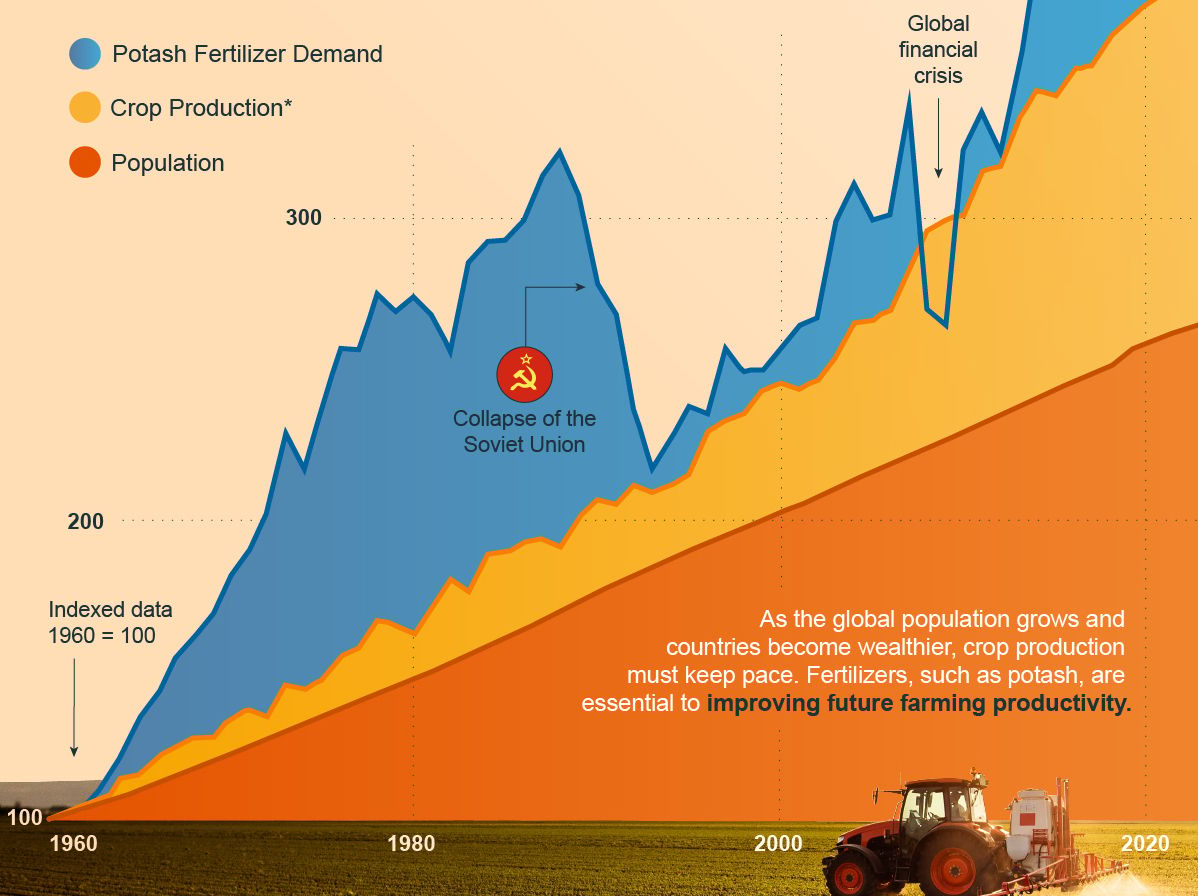- The Daily Yield
- Posts
- ⚠️ Another day, another delay
⚠️ Another day, another delay
Tariffs updates, the future of spraying tech is here, + population vs. production.

👋 Good morning. Well it’s never a dull moment when your tin boat (Canada & Mexico’s economy) is strapped to a freight ship (the U.S.) and there’s nothing you can really do about it but hang on for the ride…
Enjoy today’s read and have a great day!
— TDY team
📊 Market pulse:
Trump gives 1 month delay + grain recap

President Trump hit the pause button on some of his tariff plans, granting a one-month reprieve on the 25% duties for certain goods from Canada and Mexico. This temporary truce aims to give its neighbors time to address concerns over fentanyl trafficking. Notably, Canadian potash—a key ingredient for U.S. farmers—got a break, with tariffs reduced from 25% to 10%. However, not all energy products received exemptions, keeping some industries on edge.
While Mexico welcomed the delay, Canada is still mulling over its next move, with Prime Minister Trudeau holding off on planned retaliatory tariffs. Commerce Secretary Howard Lutnick emphasized that this pause isn't about calming the stock market jitters but about tackling national security issues. So, for now, the tariff tango takes a breather.
Grain recap:
🌽 Corn took a dive early in the week, hitting $4.55½/bushel, but clawed back to $4.64 by Thursday.
🌱 Soybeans also got caught in the tariff mess, dropping to $10.03¾, then rallying to $10.27¼ as negotiations surfaced.
🌾 Wheat mirrored the trend, dipping to $5.36¾ before bouncing back to $5.54.
🛢️ Canola stood its ground, closing at $636.40/MT despite some volatility.
🎯 AgTech spotlight:
Case IH’s SenseApply: Smarter spraying, no strings attached

Farmers, rejoice! Case IH just dropped SenseApply, a high-tech spraying system that promises precision agriculture without the soul-sucking subscription fees. That’s right—no monthly charges, no hidden costs, just good old-fashioned pay-for-it-once-and-own-it technology. This system comes packed with automated variable-rate application (VRA) and selective spraying to help you hit weeds where it hurts while keeping input costs in check.
Think of it as the GPS-guided sniper rifle of crop spraying—but instead of eliminating bad guys, it’s taking out weeds with ruthless efficiency.
How exactly does SenseApply technology outsmart the weeds? Something called Automated Variable-Rate Application (VRA) – The brains of the operation. A cab-mounted, multi-spectral camera scans your field in real-time, deciding how much spray each plant actually needs.
The big idea → Only target the weeds that deserve it.
While SenseApply introduces notable advancements in precision agriculture, offering automated variable-rate application and selective spraying without subscription fees, its real impact will depend on real-world performance and adoption. The system promises efficiency and cost savings, the effectiveness of its camera-based biomass detection and selective spraying accuracy will need to be tested across diverse farming conditions.
🌎 Agriculture:
Population boom and the potash party: Farming's fertilizer frenzy

Source: BHP
Since 1960, our global family has ballooned from about 3 billion to over 8 billion—talk about a full house! This population explosion has cranked up the demand for crops, not just to fill our bellies but also for industrial uses and biofuels. To keep up, farmers are turning to fertilizers, especially potash, to boost yields and meet this escalating appetite.
Now, here's where it gets interesting: potash demand has been outpacing both population and crop production growth. From 1960 to 2007, potash demand grew at a compound annual growth rate (CAGR) of 2.6%, while crop production and population growth lagged behind at 2.2% and 1.7%, respectively. This trend didn't slow down; between 2008 and 2023, potash demand ramped up to a 3.0% CAGR, leaving crop production (1.7%) and population growth (1.1%) eating its dust.
We're expecting nearly 10 billion mouths to feed by 2050…
This means farmers will need to produce more food on limited arable land. Innovations in sustainable practices and efficient fertilizer use, particularly potash, will be crucial in maximizing yields and ensuring food security as we move into the future.
📢 Ag-bite bulletin:
🇨🇳 China boosts grain stockpiling budget to enhance food security: China has increased its 2025 budget for grain stockpiling by 6.1%, allocating 131.66 billion yuan ($18.12 billion), aiming to bolster domestic grain production and reduce reliance on imports, particularly from the U.S. and Brazil. [read more]
🐑 Sheep grazing under solar panels: Facing a slump in crop prices, U.S. farmers like the Raines family are turning to "solar grazing," where sheep munch away under solar panels. This eco-friendly combo boosts farm income and keeps the grass in check—a win-win that's making both shepherds and solar companies beam. [read more]
🌼 A potential tool against climate change: Scientists are exploring the potential of daffodil bulb extracts to reduce methane emissions from cattle, a major greenhouse gas contributor. Trials have shown a 20% decrease in methane production, offering a promising avenue for more sustainable agricultural practices. [read more]
Don’t keep the good stuff to yourself: Share the newsletter!
The more we grow, the better we get. 📈
Brain activator:
History trivia challenge! 🧠
This invention revolutionized agriculture by making planting faster and more efficient. First patented in 1834, it replaced the slow, manual process of hand-seeding.
What is it? 🤔
Opportunities are usually disguised as hard work, so most people don’t recognize them.
🤯 Answer: The mechanical seed drill
First patented in 1834 by Jethro Tull (though earlier versions existed), the mechanical seed drill revolutionized farming by allowing seeds to be planted in evenly spaced rows at a controlled depth. This led to higher crop yields, reduced seed waste, and more efficient planting.
Reply